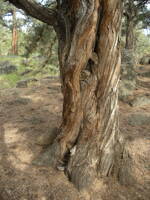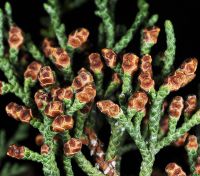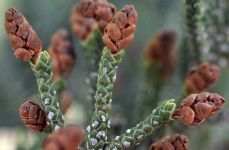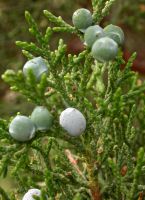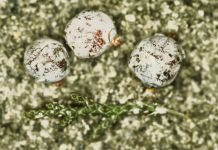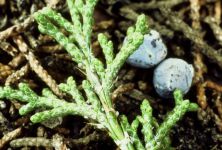Distribution: Occurring east of the Cascades crest in Washington; Washington to California, east to Idaho and Nevada.
Habitat: Desert foothills and lower mountains.
Cones: May-June
Origin: Native
Growth Duration: Perennial
Conservation Status: Not of concern
Pollination: Wind
Rounded or pyramidal tree 4-10 m. tall, usually dioecious but occasionally monoecious, the trunk 4-7 dm. thick.
Bark cinnamon-brown, furrowed and stringy.
Leaves scale-like, pale green, mostly in threes, but opposite on the smallest twigs, blunt, with minutely denticulate margins, and with a gland on the upper surface.
Staminate cones ovoid, 3-5 mm. long, with 12-16 stamens; ovulate cones maturing the second season, bluish-black, 7-8 mm. long, 1- to 3-seeded, fleshy but rather dry.
Publication: Fl. Bor.-Amer. 2: 166. 1838.
Juniperus occidentalis Hook. var. occidentalis [FNA2]
PNW Herbaria: Specimen records of Juniperus occidentalis in the Consortium of Pacific Northwest Herbaria database
WA Flora Checklist: Juniperus occidentalis checklist entry
OregonFlora: Juniperus occidentalis information
E-Flora BC: Juniperus occidentalis atlas page
CalPhotos: Juniperus occidentalis photos























